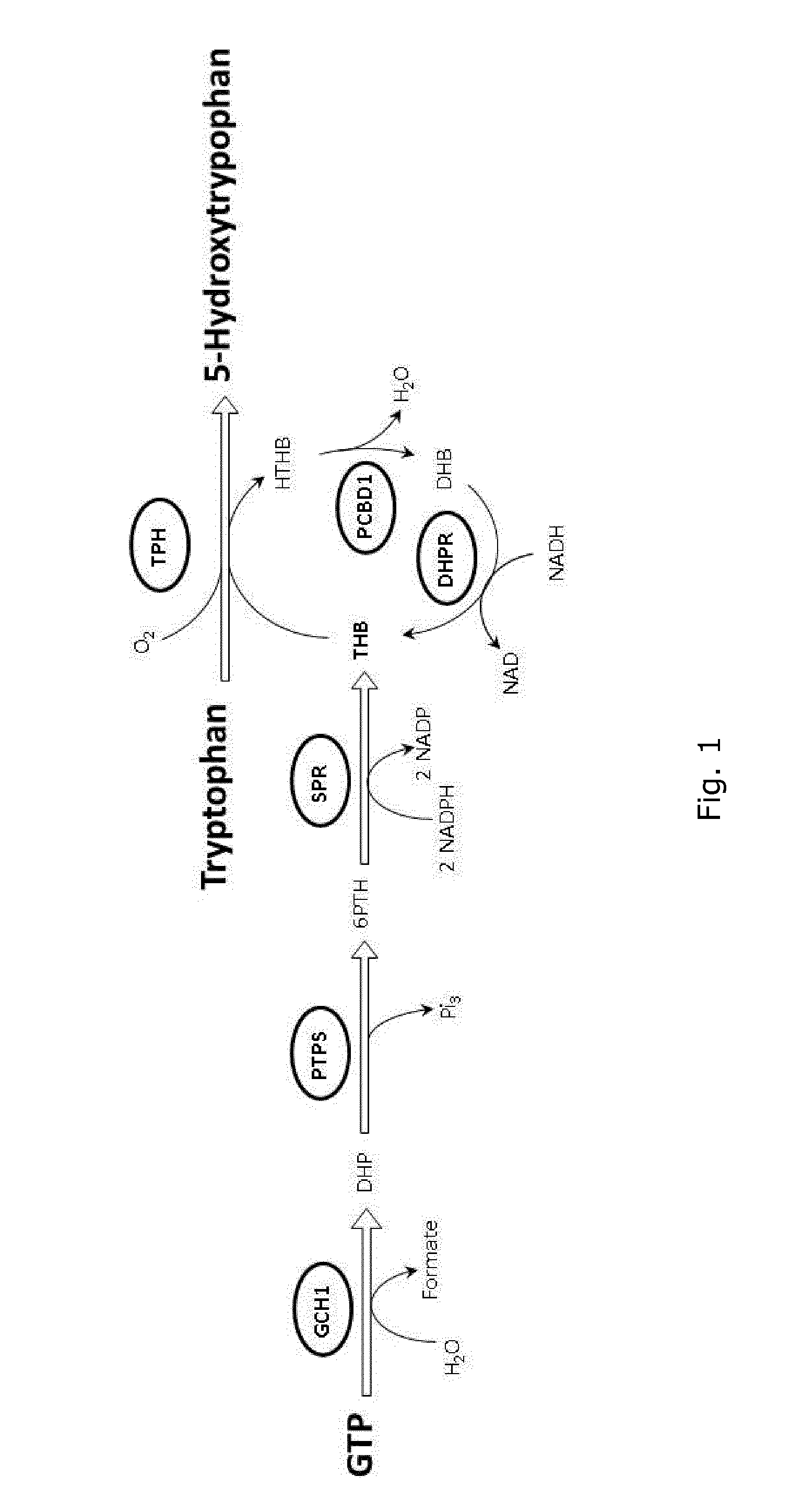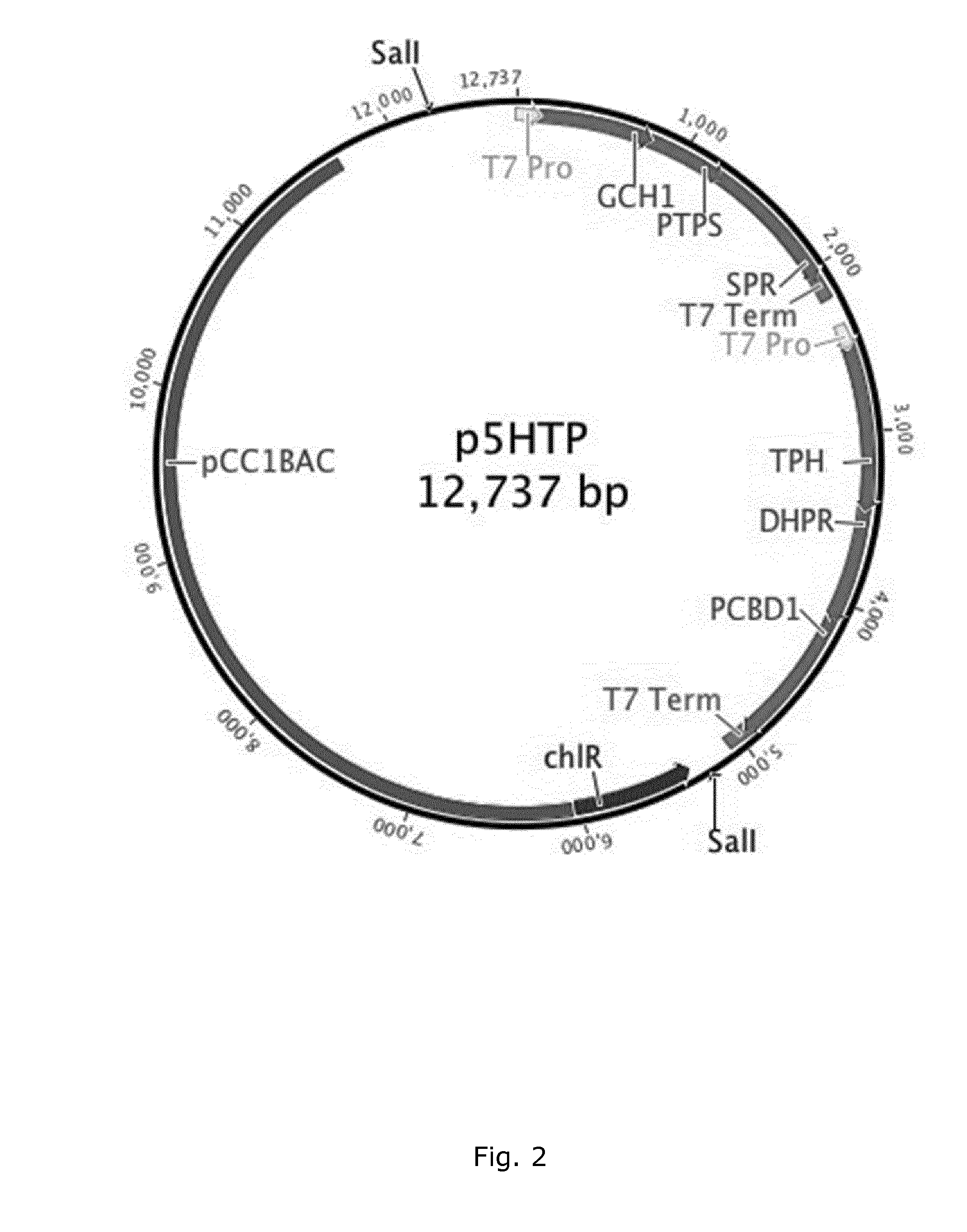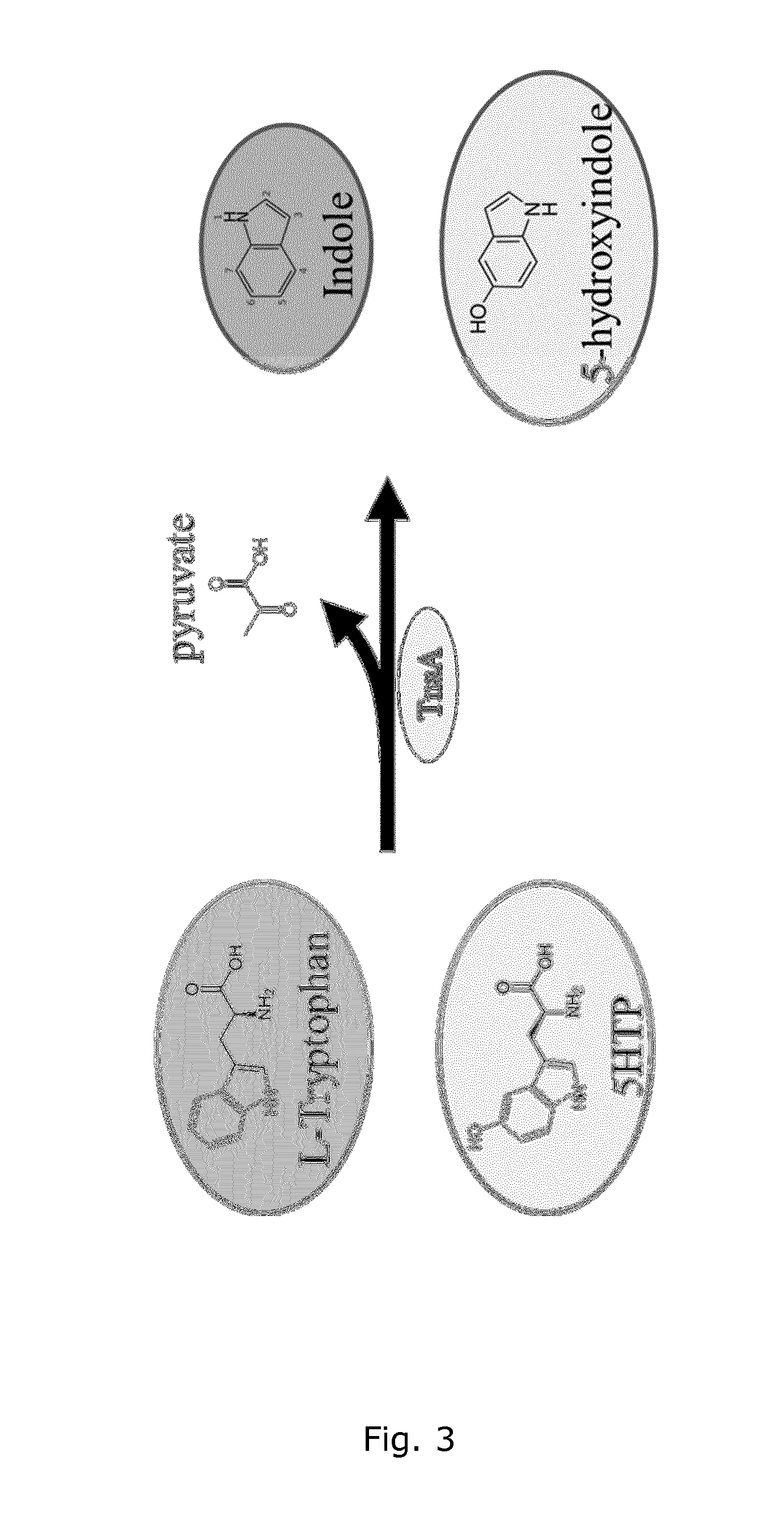Microorganisms for the production of 5-hydroxytryptophan
a technology of recombinant microorganisms and 5-hydroxytryptophan, which is applied in the direction of lyases, enzymology, carbon-oxygen lyases, etc., can solve the problems of high cost and low yield of 5htp from seeds, and achieve the effect of cost-efficient production
- Summary
- Abstract
- Description
- Claims
- Application Information
AI Technical Summary
Benefits of technology
Problems solved by technology
Method used
Image
Examples
example 1
A Metabolic Pathway for Producing 5-Hydroxy-L-Tryptophan from L-Tryptophan in a Microorganism
[0102]This example describes the introduction of a pathway for producing 5-Hydroxy-L-tryptophan from L-tryptophan, into E. coli. 5-Hydroxy-L-tryptophan is derived from the native metabolite L-tryptophan in one enzymatic step as shown in FIG. 1. The enzyme that catalyzes this reaction is tryptophan hydroxylase (TPH1, EC 1.14.16.4), which requires both oxygen and Tetrahydropterin (THB) as cofactors. Specifically, the enzyme catalyzes the conversion of L-tryptophan and THB into 5-Hydroxy-L-tryptophan and 4a-hydroxytetrahydrobiopterin (HTHB). In the following examples, for the production of 5-Hydroxy-L-tryptophan from L-tryptophan, we used TPH genes from variant organisms such as, a double truncated TPH1 from Oryctolagus cuniculus (rabbit) having the sequence of SEQ ID NO:1 (encoded by SEQ ID NO:40), TPH2 from Homo sapiens having the sequence of SEQ ID NO:2, and TPH1 from Gallus gallus having th...
example 2
Construction of DNA Constructs for Producing 5-Hydroxy-L-Tryptophan from L-Tryptophan in a Microorganism
[0105]Methods have recently been developed for assembling of multiple overlapping DNA molecules (Gibson et al., 2008) (Gibson et al., 2009) (Li & Elledge, 2007). One of these methods allows the assembly multiple overlapping DNA fragments by the concerted action of an exonuclease, a DNA polymerase and a DNA ligase. The DNA fragments are first recessed using an exonuclease; yielding single-stranded DNA overhangs that can be specifically annealed. This assembly is then covalently joined using a DNA polymerase and DNA ligase. This method was used to assemble DNA molecules the complete synthetic 583 kb genitalium genome, and has also produced products as large as 900 kb. For the production of 5-Hydroxy-L-tryptophan from L-tryptophan, we used this method to generate a 12,737 bp BAC that contains the enzymes GCH1, PTPS, SPR, TPH1, DHPR, and PCBD1, all under the control of T7 promoter or ...
example 3
Transformation of E. coli Cells with DNA Constructs for Producing 5-Hydroxy-L-Tryptophan from L-Tryptophan in a Microorganism
[0114]In a 2 mm cuvette, five microliters of the repair reaction was electroporated into 50 uL of EPI300 E. coli cells (EPICENTRE) using a MicroPulser Electroporator (BioRad). Directly following the electroporation, cells were transferred to 500 uL SOC media (2% peptone, 0.5% Yeast extract, 10 mM NaCl, 2.5 mM KC, 10 mM MgCl2, 10 mM MgSO4, 20 mM Glucose) and incubated at 37° C. for 2 hours. Cells were then plated onto LB agar supplemented with 15 μg / m chloramphenicol or 50 μg / ml kanamycine depending on the vector backbone sequence, and incubated overnight at 37° C. Yields typically depend on the size of overlapping regions, the size of the final construct, and the number of DNA pieces that are being assembles. Specifically, shorter overlapping regions, larger final constructs, and higher number of assembly pieces all lead to a decrease in yields. In this assemb...
PUM
| Property | Measurement | Unit |
|---|---|---|
| concentration | aaaaa | aaaaa |
| concentration | aaaaa | aaaaa |
| temperature | aaaaa | aaaaa |
Abstract
Description
Claims
Application Information
 Login to View More
Login to View More - R&D
- Intellectual Property
- Life Sciences
- Materials
- Tech Scout
- Unparalleled Data Quality
- Higher Quality Content
- 60% Fewer Hallucinations
Browse by: Latest US Patents, China's latest patents, Technical Efficacy Thesaurus, Application Domain, Technology Topic, Popular Technical Reports.
© 2025 PatSnap. All rights reserved.Legal|Privacy policy|Modern Slavery Act Transparency Statement|Sitemap|About US| Contact US: help@patsnap.com



